
How to Use RF measurement AD8313: Examples, Pinouts, and Specs
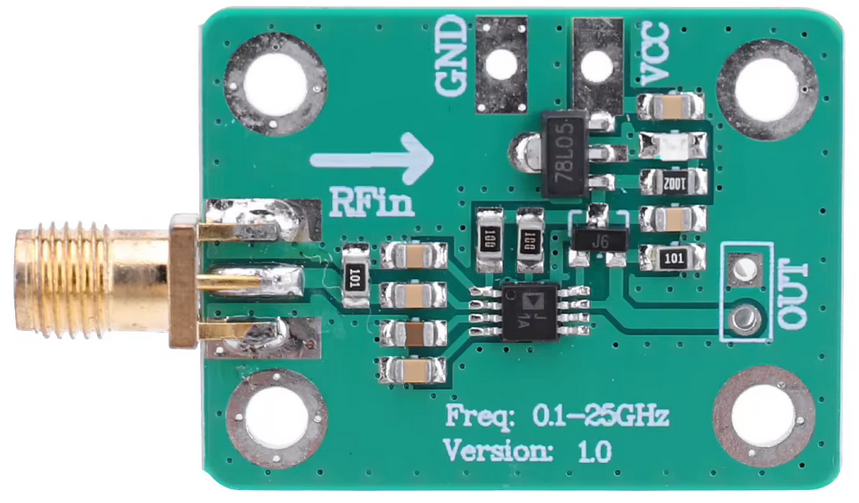
 Design with RF measurement AD8313 in Cirkit Designer
Design with RF measurement AD8313 in Cirkit DesignerIntroduction
The AD8313, manufactured by Analog Devices, is a high-speed, low-cost RF power detector designed to provide a linear output voltage proportional to the input RF power level. It operates over a wide frequency range of 100 MHz to 2.5 GHz, making it suitable for a variety of RF measurement applications. The AD8313 is commonly used in signal strength monitoring, power level detection, and automatic gain control (AGC) systems.
Explore Projects Built with RF measurement AD8313
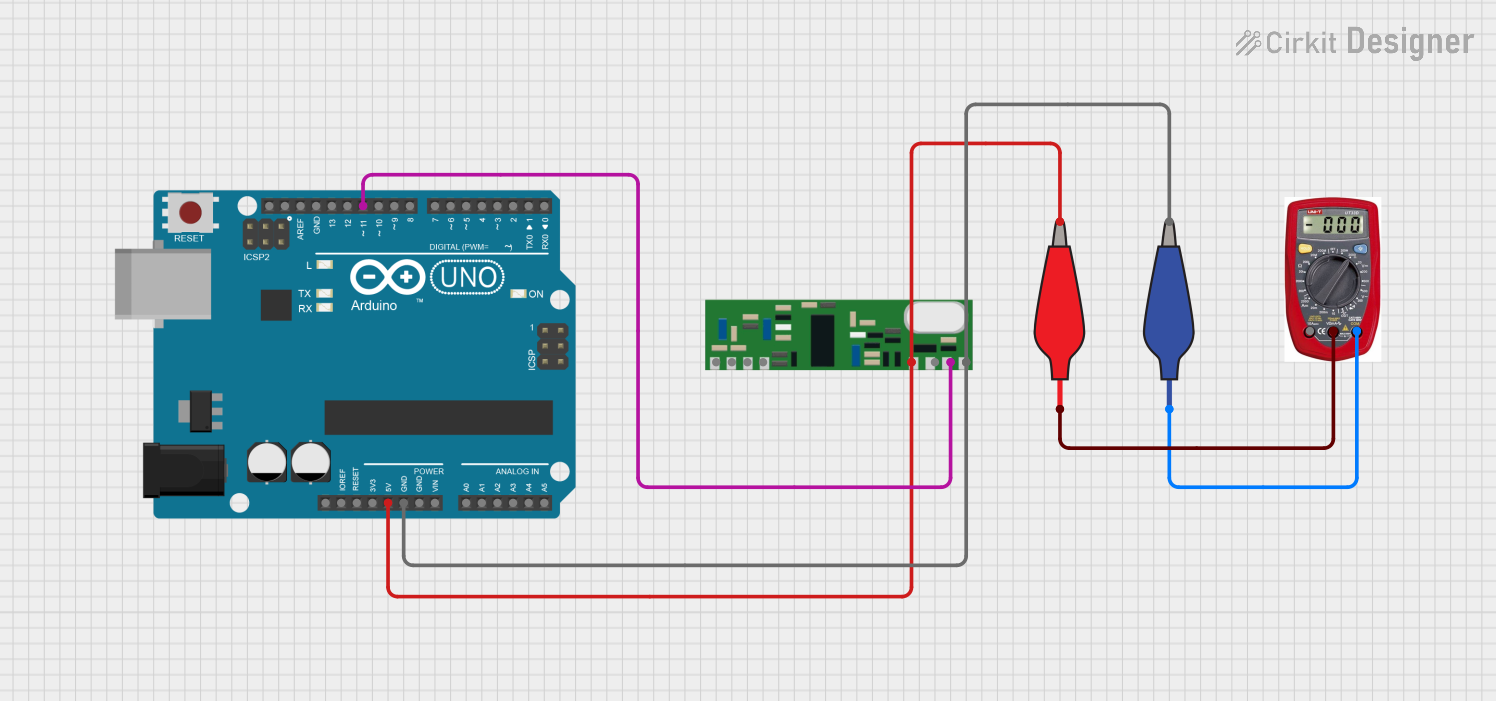
 Open Project in Cirkit Designer
Open Project in Cirkit Designer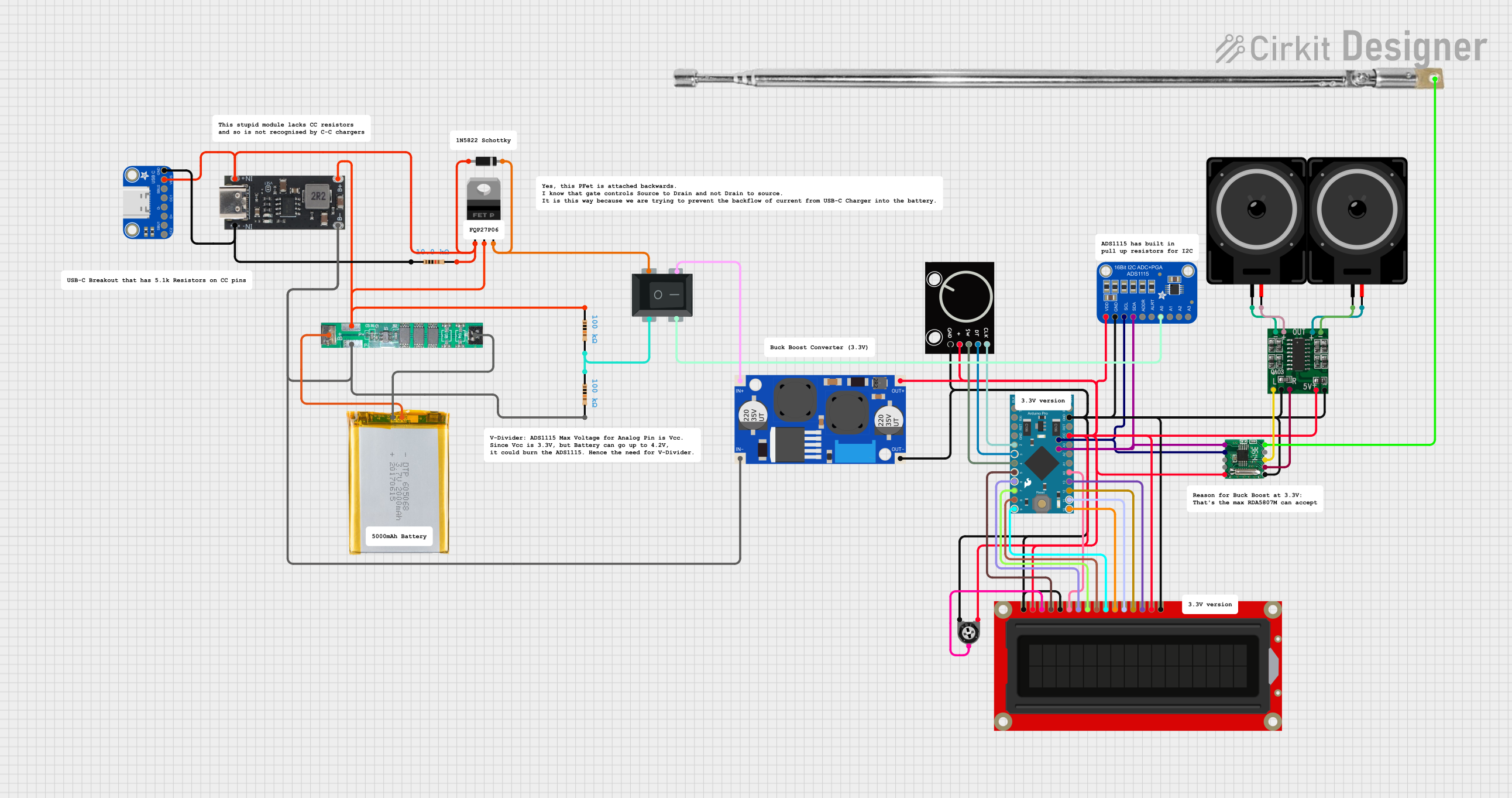
 Open Project in Cirkit Designer
Open Project in Cirkit Designer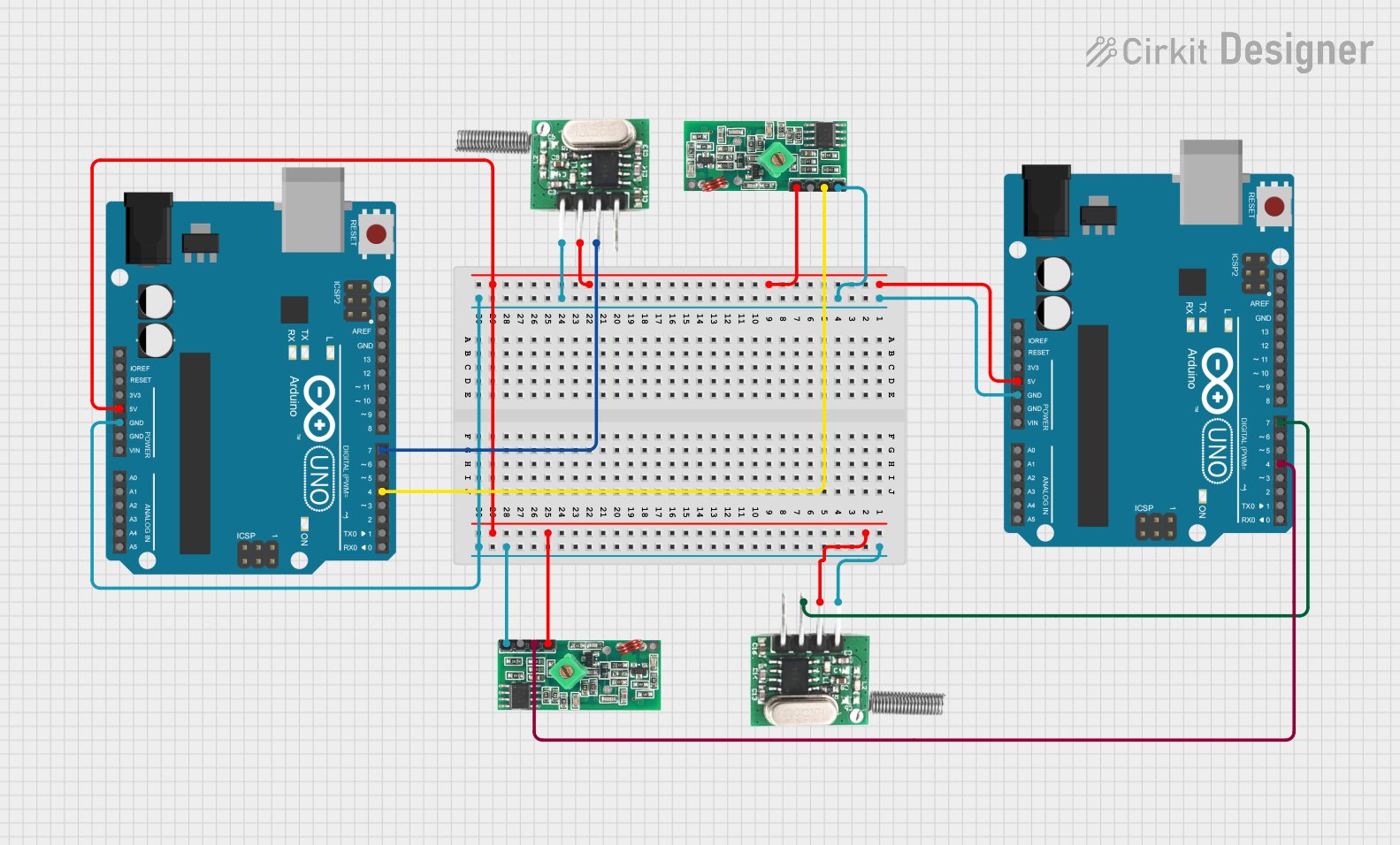
 Open Project in Cirkit Designer
Open Project in Cirkit Designer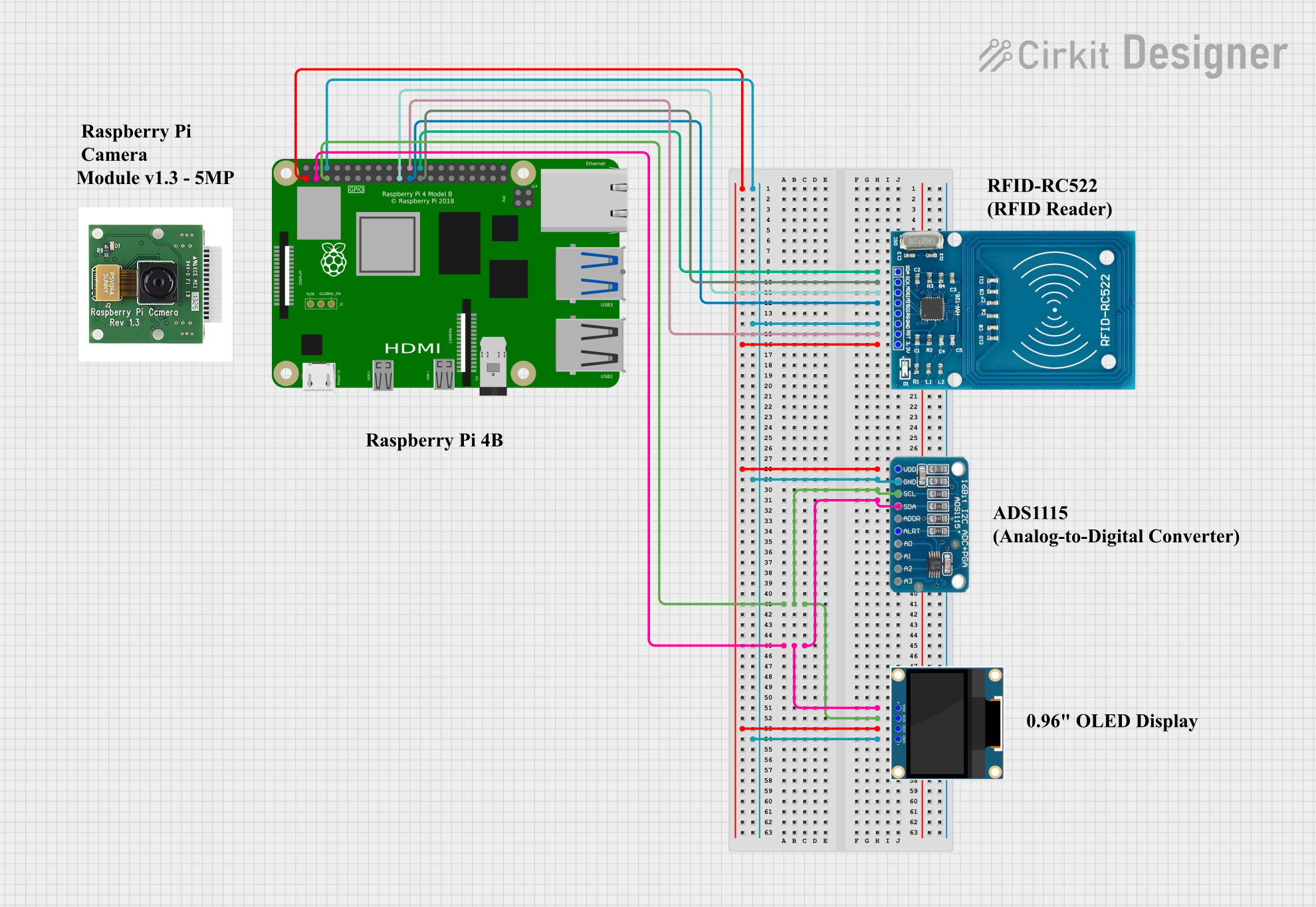
 Open Project in Cirkit Designer
Open Project in Cirkit DesignerExplore Projects Built with RF measurement AD8313

 Open Project in Cirkit Designer
Open Project in Cirkit Designer
 Open Project in Cirkit Designer
Open Project in Cirkit Designer
 Open Project in Cirkit Designer
Open Project in Cirkit Designer
 Open Project in Cirkit Designer
Open Project in Cirkit DesignerCommon Applications and Use Cases
- Wireless communication systems for signal strength monitoring
- RF power measurement in test and measurement equipment
- Automatic gain control (AGC) loops
- Transmitter power control in cellular base stations
- General-purpose RF signal detection and monitoring
Technical Specifications
The AD8313 is designed to deliver high performance in RF measurement applications. Below are its key technical specifications:
| Parameter | Value |
|---|---|
| Frequency Range | 100 MHz to 2.5 GHz |
| Input Power Range | -60 dBm to 0 dBm |
| Output Voltage Range | 0.5 V to 2.1 V |
| Supply Voltage (Vcc) | 2.7 V to 5.5 V |
| Supply Current | 8 mA (typical) |
| Temperature Range | -40°C to +85°C |
| Input Impedance | 50 Ω |
| Output Impedance | 200 Ω |
| Package Type | 8-lead SOIC (Small Outline Integrated Circuit) |
Pin Configuration and Descriptions
The AD8313 is available in an 8-lead SOIC package. The pin configuration and descriptions are as follows:
| Pin Number | Pin Name | Description |
|---|---|---|
| 1 | VPOS | Positive supply voltage (2.7 V to 5.5 V). |
| 2 | INHI | RF input signal (high side). Connect to the RF signal source. |
| 3 | INLO | RF input signal (low side). Typically connected to ground. |
| 4 | COMM | Ground reference for the device. |
| 5 | FLTR | Low-pass filter pin. Connect a capacitor to ground to set the response time. |
| 6 | VOUT | Output voltage proportional to the input RF power level. |
| 7 | ENBL | Enable pin. Logic high enables the device; logic low disables it. |
| 8 | VNEG | Negative supply voltage or ground. |
Usage Instructions
The AD8313 is straightforward to use in RF measurement circuits. Below are the steps and considerations for integrating it into your design:
Basic Circuit Connection
- Power Supply: Connect the VPOS pin to a stable DC supply voltage between 2.7 V and 5.5 V. Connect the COMM and VNEG pins to ground.
- RF Input: Feed the RF signal to the INHI pin. The INLO pin should typically be connected to ground.
- Output Voltage: The VOUT pin provides a voltage proportional to the input RF power level. This output can be connected to an ADC (Analog-to-Digital Converter) for further processing.
- Low-Pass Filter: Connect a capacitor (e.g., 10 nF) between the FLTR pin and ground to set the response time of the detector.
- Enable Pin: Drive the ENBL pin high to enable the device. If unused, connect it to VPOS.
Important Considerations
- Input Matching: The AD8313 has a 50 Ω input impedance, so ensure proper impedance matching for accurate measurements.
- RF Power Range: The device operates optimally within the input power range of -60 dBm to 0 dBm. Avoid exceeding this range to prevent damage.
- Filtering: Use an appropriate capacitor on the FLTR pin to smooth the output voltage and reduce noise.
- Thermal Management: Ensure adequate thermal dissipation if operating at high ambient temperatures.
Example: Using AD8313 with Arduino UNO
The AD8313 can be interfaced with an Arduino UNO to measure RF power levels. Below is an example code snippet:
// Example: Reading RF power level using AD8313 and Arduino UNO
// Connect AD8313 VOUT to Arduino analog pin A0
// Ensure proper power supply and grounding for the AD8313
const int analogPin = A0; // Analog pin connected to AD8313 VOUT
float voltage = 0.0; // Variable to store the measured voltage
float power_dBm = 0.0; // Variable to store the calculated RF power in dBm
void setup() {
Serial.begin(9600); // Initialize serial communication
}
void loop() {
// Read the analog voltage from AD8313
int adcValue = analogRead(analogPin);
voltage = (adcValue * 5.0) / 1023.0; // Convert ADC value to voltage (5V reference)
// Convert voltage to RF power in dBm
// Example linear equation: power_dBm = (voltage - 0.5) / 0.025
// Adjust the equation based on the AD8313 datasheet calibration curve
power_dBm = (voltage - 0.5) / 0.025;
// Print the results
Serial.print("Voltage (V): ");
Serial.print(voltage, 3); // Print voltage with 3 decimal places
Serial.print(" | Power (dBm): ");
Serial.println(power_dBm, 2); // Print power with 2 decimal places
delay(500); // Wait for 500 ms before the next reading
}
Notes:
- The linear equation used to calculate RF power (
power_dBm = (voltage - 0.5) / 0.025) is an example. Refer to the AD8313 datasheet for the exact calibration curve. - Ensure the Arduino's analog reference voltage matches the AD8313's output range for accurate readings.
Troubleshooting and FAQs
Common Issues and Solutions
No Output Voltage:
- Ensure the ENBL pin is driven high or connected to VPOS.
- Verify the power supply connections and voltage levels.
Inaccurate RF Power Measurements:
- Check the input impedance matching (50 Ω) and ensure the RF signal is within the specified frequency and power range.
- Verify the calibration equation used to convert voltage to dBm.
Excessive Noise on Output:
- Increase the capacitor value on the FLTR pin to improve filtering.
- Ensure proper grounding and shielding of the circuit to minimize interference.
Device Overheating:
- Check for excessive input power levels or high ambient temperatures.
- Ensure proper thermal dissipation and avoid operating beyond the specified temperature range.
FAQs
Q: Can the AD8313 measure negative RF power levels?
A: Yes, the AD8313 can measure RF power levels as low as -60 dBm. The output voltage decreases linearly with lower input power.
Q: What is the typical response time of the AD8313?
A: The response time depends on the capacitor connected to the FLTR pin. A 10 nF capacitor typically provides a response time of a few microseconds.
Q: Is the AD8313 suitable for battery-powered applications?
A: Yes, the AD8313 has a low supply current of 8 mA, making it suitable for low-power applications.
Q: Can the AD8313 operate at frequencies below 100 MHz?
A: The AD8313 is optimized for 100 MHz to 2.5 GHz. Performance below 100 MHz may degrade and is not guaranteed.